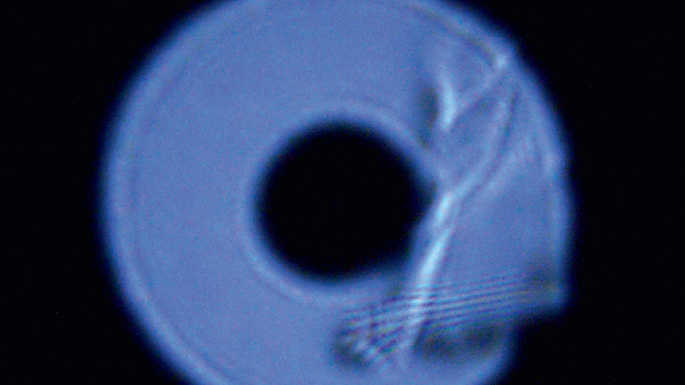Please ventilate well
Newtonian and Dobsonian telescopes are simple open-tube designs. Why fans help prevent currents of warm air.
 Turbulence can be nicely demonstrated by holding a hand in front of the optics. S. Wienstein
Turbulence can be nicely demonstrated by holding a hand in front of the optics. S. WiensteinAir turbulence, generally known as seeing, is considered an unalterable part of the observing conditions. Fortunately, this is not entirely true, because some air turbulence can originate from the telescope itself, if it is generating currents of warm air. To see this effect in practice, de-focus a bright star and hold your hand in front of the aperture.
Ventilating a telescope is intended to mix these layers of warm air so that a homogeneous air mixture is created in the optical path. Since there are almost always temperature differences, cooling alone is a minor issue. Simple ventilation concepts can be implemented on telescopes with an open tube. Here, air is sucked in through the tube opening and blown out with a fan located behind the primary mirror. However, fans that simply blow onto the primary mirror from behind can only cool it and will not circulate the air inside the tube.
More complex ventilation concepts create an even flow of air over the optical surfaces, usually with juxtaposed fans that suck and blow. This also works for truss-tube constructions. Concepts for closed tubes should keep the interior free of dust and pollen. Here, you either need to create circulation within the tube only, or any external air drawn in must be filtered. Adjustable fans with a large cross-section that are generally available as computer accessories are recommended.
Author: Sven Wienstein / Licence: Oculum Verlag GmbH
